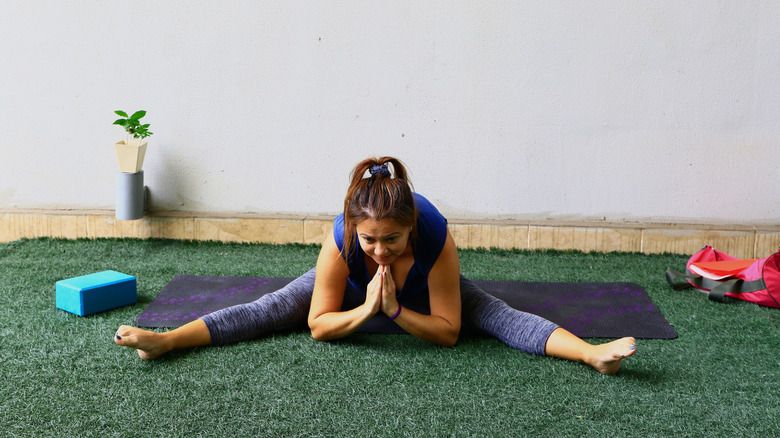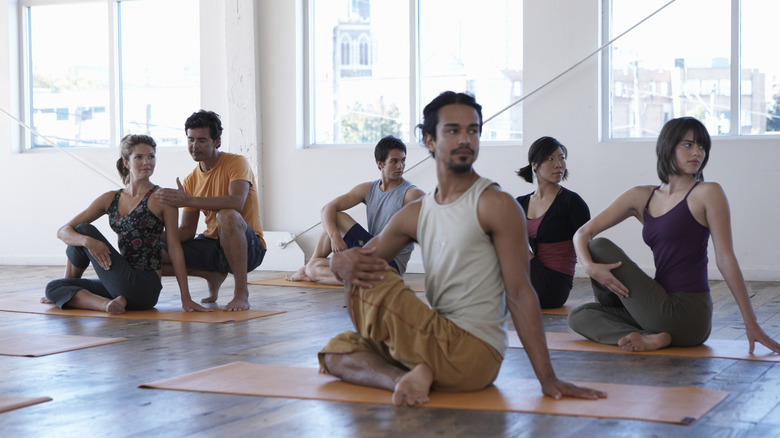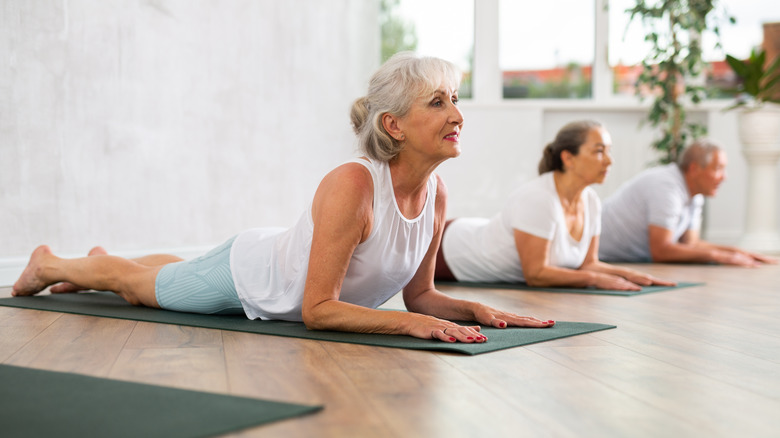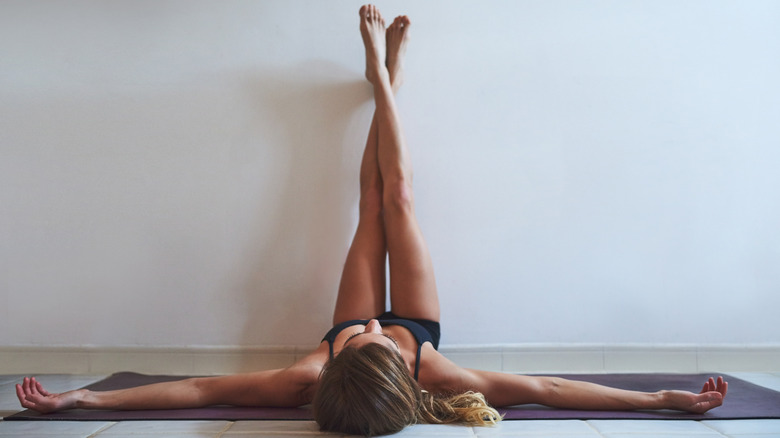The Best Exercises To Do Before Bed For A More Comfortable Sleep
Sleep often slips to the bottom of the priority list when life gets busy. It's hard enough to wake up early, rush to work, battle traffic on the way home, and find something reasonably healthy for dinner. Evenings can fill up quickly, especially during the holidays, leaving your mind too wound up to drift off easily.
A powerful HIIT workout earlier in the day can improve sleep, but exercising too close to bedtime may have the opposite effect, according to a 2025 article in Nature Communications. High-intensity exercise within four hours of going to bed can make it harder to fall asleep and may shorten your total sleep time, particularly if you usually train earlier in the day.
The Sleep Foundation says that lighter forms of activity before bed may actually help you sleep more soundly. The key is choosing slow movements like yoga that don't raise your core body temperature too much. As your body prepares for rest, both your temperature and heart rate need to drop to support deep, restorative sleep. Here's a gentle yoga sequence to practice every night.
A wide-legged forward fold can help to relax the mind and body
TikTok and Instagram may be full of people twisting into pretzel poses in exotic settings, but yoga doesn't have to look like that. You can practice just as easily in your bedroom in your pajamas. Gentle, mind-body practices like yoga help calm the parasympathetic nervous system, making it easier to drift off. A 2023 study in BMC Psychiatry found that yoga reduced nighttime awakenings in people with insomnia.
Skip the hot vinyasa or power flows, which are designed to build heat. Instead, focus on restorative, floor-based poses that relax your body, like this wide-legged forward fold. If you have some wall space, roll out your yoga mat nearby. Sit with your hips against the wall, legs comfortably apart, and place pillows under your knees to protect them from hyperextension. You can rest additional pillows or a bolster between your legs for more support. Slowly fold your torso between your legs until you feel a slight stretch. It shouldn't be to your fullest stretch, but maybe about 50%. Breathe slowly through your nose and stay here for three to five minutes, allowing the tissues in your legs to gradually release.
Squeeze out tension in a seated twist
To release some of the tension in your hips and torso, seated twists can help. From the previous pose, scoot your hips forward about a foot from the wall. Bend both knees and cross your right leg over your left. Your left leg can remain straight, with the top of your right knee pointing toward the ceiling and your right foot grounding into the floor. You can also bend your left leg under your right so that your foot rests near your right hip. Inhale and lengthen your spine, then twist your torso to the right as you exhale. You may wrap your left hand around your right knee to deepen the twist.
Keep your breath slow and steady as you hold the pose. There should be no strain. You can reach your right hand behind you to help keep your spine extended through the twist. Notice the expansion across your chest, especially near your right shoulder. With each inhale, lengthen the spine, and with each exhale, explore a gentle increase in the twist. After about 20 breaths, switch sides, placing your left knee over your right and twisting to the left.
Stretch the front body with an easy cobra pose
You might be familiar with cobra pose if you've taken a yoga class. The pose involves arching the spine while engaging the muscles along the back of your body. However, it can strain your lower back if you're not careful, especially if you use your arms to push your chest too high. A gentler version of this pose before sleep is sphinx pose.
Start on your belly with your legs extended straight behind you. Gently wiggle your hips and inch them back slightly to notice if there's any compression in your spine. Instead of pressing up with your arms, come onto your forearms. Use the strength of your shoulders to pull your forearms backward toward your hips. Let your shoulders roll down and back as you lift your chest a few inches from the floor.
To avoid too much pressure in your lower back, press your pubic bone into the floor and imagine gently lifting your belly button away from it. Rather than pulling your chest up, aim to stretch forward. Focus on creating length from the midpoint of your chest to the base of your neck. Try to make that line feel longer as you breathe deeply into your diaphragm.
Legs up the wall pose reverses the weight of gravity on your body
The idea of hanging upside down may not seem ideal when you're trying to wind down for the evening, but Legs Up the Wall is a gentle inversion that can help you sleep. During the day, blood can pool in your legs, especially if you spend long periods sitting or standing still. This can cause swelling in your legs and feet, and over time may contribute to chronic venous insufficiency. By gently inverting your body, you encourage fluid to move from your legs back toward your heart.
To practice Legs Up the Wall, lie on one side perpendicular to the wall with your knees bent and your hips a few inches away from it. As you draw your knees toward your chest, swing your hips and torso around until you're facing the ceiling. Extend your legs upward and let the wall support them as you feel the gentle release of fluid down your legs. Your arms can rest overhead, out to the sides in a T-shape, or softly on your belly. Stay here for three to five minutes, breathing slowly and deeply into your abdomen. Because you're already on your back, this is the perfect posture to guide you into a deep sleep.




